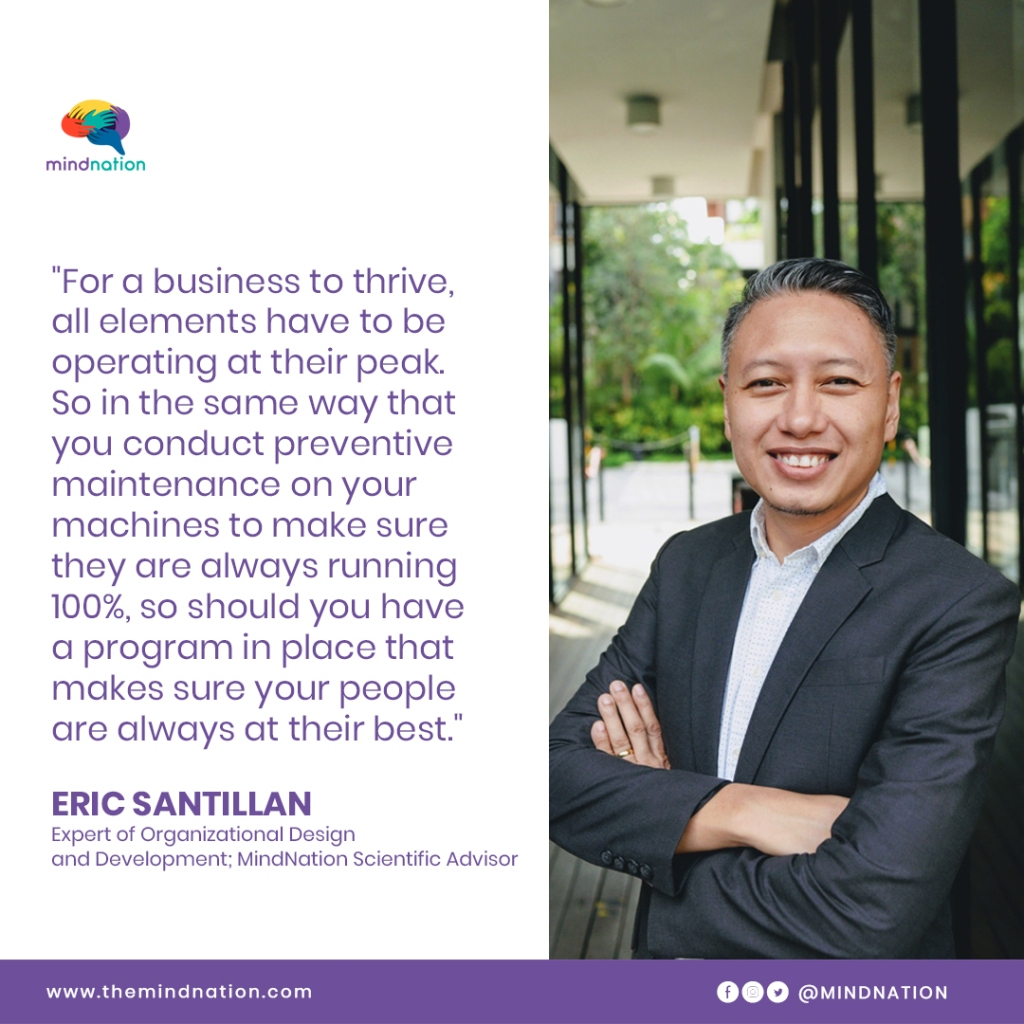Make 2022 your organization’s Year Of WellBeing. Visit www.mindnation.com now.
If 2021 was about learning to live and work during a pandemic, 2022 will be about applying all the lessons learned this past year. What will the future of work look like? Business coach and consultant Grace De Castro of V+A Consulting, a boutique consulting firm with expertise in customized people programs and creative business solutions, shares her predictions:
- The hybrid mode of work will be the new normal — and not everyone is going to be treated fairly. “Sadly, there are still many leaders who equate ‘presence with performance,’” Grace says. “This means that those who choose to go to work onsite will be considered more productive and valuable than those who remain or prioritize working from home.”
What this means for companies: Leaders must ensure that all team members — regardless of where they are working from — are regarded equally and treated fairly especially in terms of promotions and pay raises. Not doing so will cause discontent among team members. “Leaders must also change the prevailing mindset about what it means to be productive, and create avenues for more collaboration between employees,” Grace advises. - Organizations will fight to attract and retain existing talent. “I know of quite a number of senior executives and managers in the Philippines who decided to take their families and just move — whether it’s to outside the city for a quieter provincial life, or even out of the country. This migration is the most I’ve seen since I started working 25 years ago,” Grace relates.
Their reason for moving? “The past two years have made many pause and rethink their priorities,” she explains. “They either realized that they want more time with their family, or that what they are doing now is not what they want to do for the rest of their lives.”
What this means for companies: “There is going to be a lot of creativity around talent attraction and retention,” Grace says. “The fight is no longer against other companies, it’s now about whether your employee is finding purpose in their current role or if the current work schedule supports their desire for work-life balance.”

- Employee health and safety will continue to be a top concern. As employees return to work, many will be struggling with fears and anxieties over their safety and adjusting to new procedures and protocols. This post outlines the things managers can do to make the transition easier and assure team members that the workplace will be a safe space for them, physically and mentally.
What this means for companies: Adhering to health and safety standards in the new normal requires added expenses, so leaders need to look at where they can cut costs and reallocate the budget. What’s important to you? Is it your bonus, or upgrading the ventilation system? Is it new furniture or investing in an employee well-being program? “Part of being a leader is looking at the situation, spotting the areas of concern, and making the tough calls to address them,” says Grace.
“Part of being a leader is looking at the situation, spotting the areas of concern, and making the tough calls to address them,”
Grace De Castro, Business Coach And Consultant
- Mental health and well-being will become very important. “The last two years have really taken a toll upon all of us, and business leaders need to acknowledge that there is no going back to before,” Grace says. “Mental health can no longer be a special event that only gets talked about during Mental Health Month or Suicide Prevention Month. Conversations around mental health need to be normalized; people who are struggling should know where they can seek help and not be ashamed about it.”
What this means for companies: While it’s understandable that the priority of a company in the new normal is profitability, this cannot be at the expense of the team’s well-being. “You can’t expect people to be delivering multitudes when they’re physically, mentally, and emotionally broken and with no social support,” Grace says. “Treat your employees well, because if you take care of them they will take care of your business. And if your people are at the place where they can deliver, you can have both — profits and a culture that supports mental health and well-being.”
If you need help, partner with MindNation to receive a holistic, data-driven, and customized well-being program for your organization. Visit www.mindnation.com or email [email protected] to know more.
With many businesses hoping to return to some semblance of normalcy in 2022, it is important to remember that success can only be achieved when all parts of a company are working well together, from the machinery to the people. Workplace well-being should not only be a priority, it must be made mandatory.




